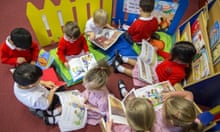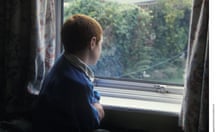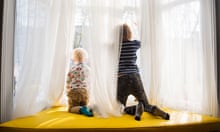Spending more time indoors and on screens because of Covid restrictions may be linked to an increased rate of short-sightedness in children, researchers say.
The study, which looked at two groups of children aged six to eight in Hong Kong, is the latest to suggest that lockdowns and other restrictions may have taken a toll on eyesight: data from more than 120,000 children of a similar age in China, published earlier this year, suggested a threefold increase in the prevalence of shortsightedness, or myopia, in 2020.
Dr Jason Yam of the Chinese University of Hong Kong, a co-author of the new study, said “near work” – such as reading, writing or watching TV – is believed to be a risk factor for myopia, while increased outdoor time has been consistently shown to have a protective role.
However, Covid restrictions had kept many indoors. “In Hong Kong, schools were closed for months, and even recreational facilities such as playgrounds, sports grounds, and even outdoor campsites and country parks were shut,” Yam said.
Small living spaces and a paucity of private outdoor spaces meant many families had no choice but to stay home or stay indoors. “Naturally, more time was spent on reading, watching television, or using computers, smartphones, or other digital devices,” he added.
Writing in the British Journal of Ophthalmology, Yam and colleagues report how they recruited one group of schoolchildren in 2015, and another group between 1 December 2019 and 24 January 2020, when the pandemic began. The former group was followed up after three years, the latter after eight months.
As well as carrying out eye examinations, the team asked children about the amount of time they spent outdoors and on screens and doing other near work.
The results, from 709 children in the Covid-era group and 1,084 in the pre-Covid-era group, reveal that short-sightedness was more common in the latter group, with about one in three children developing myopia over the three years, compared with about one in five of the Covid-era group developing it over eight months.
However, after taking into account the follow-up duration of each cohort, the team found an estimated annual incidence of myopia of almost 30% in the Covid-era group, compared with just under 12% in the pre-Covid era group, suggesting a 2.5-fold increase in myopia incidence during the pandemic.
The study also revealed dramatic changes in outdoor time between recruitment and follow-up of the Covid-era group, falling from about 75 minutes a day to 24 after Covid restrictions were introduced. Over the same period, the children’s time on near work, including use of screens, rose from just under 3.5 hours a day to about 8 hours per day.
“Our study showed that less time spent outdoors and more time spent on near work, including screen time, is associated with faster progression in short-sightedness, or myopia, which sounds like an innocuous condition but can actually predispose one to multiple ocular complications and increase risk of irreversible vision loss later in life,” said Yam.
While it is not clear whether the results would hold for children in the UK, not least because levels of myopia are known to be particularly high in industrialised areas of East Asia, Yam said the nationwide stay-at-home mandates in the UK, and likely increases in near work or screen time, means they could be similar.
James Wolffsohn, professor of optometry at Aston University, who was not involved in the research, told the Guardian that at least nine studies have so far had identified an increase in myopia progression during the pandemic, with one suggesting this was partially reversed after lockdown.
Wolffsohn said the Hong Kong study had limitations, including that the comparison of the groups is made difficult by different follow-up periods and it is known that myopia progression reduces as children get older. But, he added: “Read in conjunction with the other papers identified, the strength of evidence is quite marked.”









